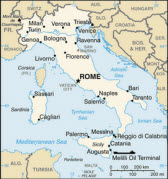Under the scheme, announced on Monday by the Food and Agriculture Organization (FAO), 26 nations will soon be able to provide improved data on forest and land use – a key pledge of all State signatories to the Paris Climate Agreement.
Accurate monitoring of forest and land use is essential if countries are to track progress towards the sustainability goals (SDGs) as they adopt climate change-mitigation and adaptation measures, FAO explained.
Forests provide security, income
“Forests are more than trees and fundamental for food security and improved livelihoods”, FAO said in a statement.
“They contribute to resilience of communities by regulating water flows, providing food, wood energy, shelter, fodder and fibre, generate income and employment as well as harbour biodiversity. Furthermore, forests support sustainable agriculture and human wellbeing by stabilizing soils and climate.”
The $7.1 million initiative is being implemented by FAO and national officers, who already support 70 countries with forest-monitoring to ensure more sustainable land management.
The data gathered on the status of the world’s forest resources is available via FAO’s Global Forest Resources Assessment (FRA 2020) reporting platform.
Welcoming the launch of the project, Hiroto Mitsugi, from the agency’s Forestry Department, explained that many developing countries are unable to generate reliable forest data to highlight their “climate achievements”.
“This project will provide an essential platform for more transparent forest-related data, helping countries to compile, analyse and disseminate better data in line with the Paris Agreement’s requirements,” he said.
In concrete terms, the scheme will support an e-learning course on transparency in the forest sector for national forestry staff.
The course will also be made available more widely, to universities, the private sector and intergovernmental organizations, FAO said.
Reached on 12 December 2015, the Paris Agreement calls on countries to combat climate change and to accelerate and intensify the actions and investments needed for a sustainable low-carbon future.
To date, 187 Parties have ratified the Agreement, out of 197 Parties to the United Nations Framework Convention on Climate Change (UNFCCC). The United States formally announced its withdrawal just last week.
The Agreement’s central aim is to strengthen the global response to the threat of climate change by keeping global temperature rise this century to well below two degrees Celsius above pre-industrial levels.
Countries are also expected to pursue efforts to limit the planet’s temperature increase to 1.5 degrees Celsius and invest in ways to strengthen their ability to deal with the impacts of climate change.
All Parties to the Agreement are also required to implement “nationally determined contributions” (NDCs) and to strengthen these efforts in the years ahead.
This includes requirements that all Parties report regularly on their emissions and on their implementation efforts and participate in a global stock take every five years to assess progress.



